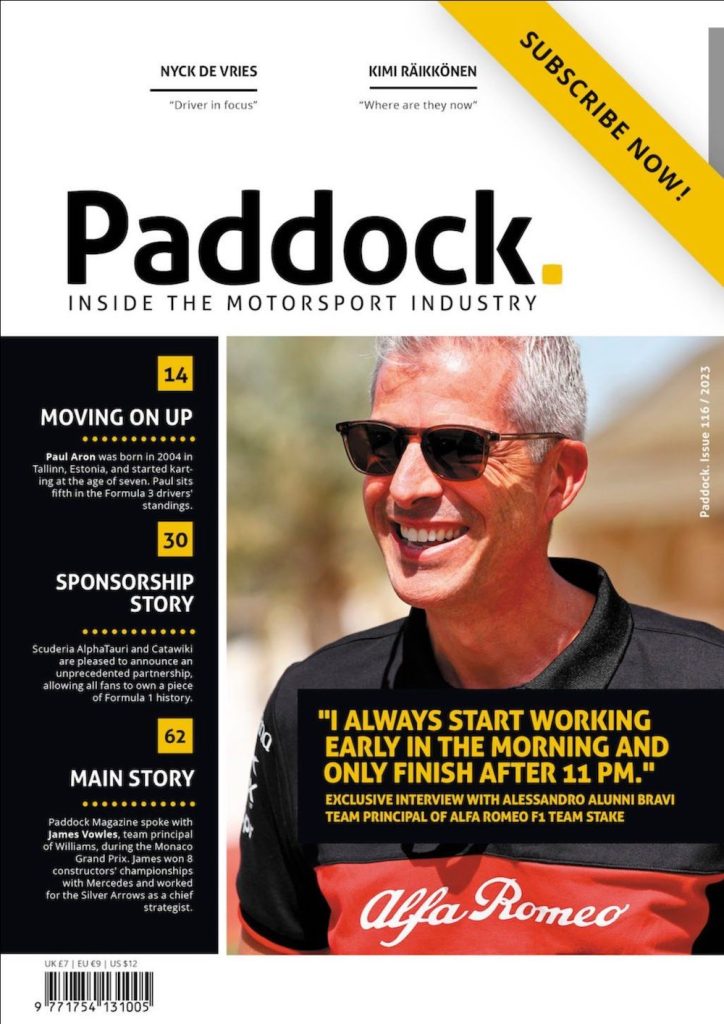Tim Scott, Commercial Director of Status Grand Prix, updates us on the valuable shifts in other series around the pinnacle of motorsport – GP2, GP3, DTM, GT and so forth.
Click here to subscribe to our print edition!
The point
The concept of series like GP2 and GP3 is to provide the ideal finishing school for drivers before they step into Formula 1. Both series are directly relevant in terms of learning F1 circuits, and how the surfaces of those circuits behave during a Formula 1 weekend. The big thing though is that young drivers should be learning and understanding the Pirelli P Zero tyre, which is constructed similarly to Pirelli’s Formula 1 tyre. GP2 and GP3 are unique in providing that opportunity, and learning tyre management and conservation is a vital skill for drivers to their armoury.
The lap times this year see GP2 very close to the back of the Formula 1 grid with their 600hp, and at 400hp GP3 cars are around five seconds off GP2. So these days the GP3 car is genuinely quick and fits into the ladder perfectly.
The main thing is identifying genuine talent which deserves a chance to qualify in Formula 1. In Status GP’s view, GP3 is ahead of all other formulae in having the driver’s ability as the primary factor in the result of the race, because the differentiation between the cars of different teams is so tightly controlled by the regulations. The series is incredibly competitive, and given that three of the first four GP3 champions are racing well in Formula 1, the F1 teams can be confident that whoever wins the GP3 Series is a driver who can deliver for them at the highest level.
Some areas of the sport are proving more progressive than others, but all have to be aware of the sport’s place as an entertainment and marketing proposition because nothing can be taken for granted.
Behind the wheel
I believe nearly all young drivers automatically aspire to get to Formula 1. It is the pinnacle of the sport, obviously. But with only 22 seats available, there has been a growing trend in recent years for drivers to reassess their goals a little earlier than previously, and peel off the single-seater ladder and aim for professional drives in DTM, Le Mans prototypes and GT racing. This is a natural process, but most of these other forms of motorsport still look first at a driver’s single-seater credentials when assessing their potential.
The ‘old guard’ of traditional motorsport countries, such as Great Britain, Germany, Japan, France, Brazil and Italy, are still producing a lot of talented professional drivers because their infrastructure of training is mature and strong. But it is good for the sport’s diversification that emerging motorsport countries are putting funding behind young and promising drivers. South American countries, such as Colombia and Venezuela, have been supporting more and more racers in recent years – and that’s a very noticeable tendency. The greatest recent growth is certainly Russia, but young Chinese drivers are emerging as well. The nationalities prevalent on the Formula 1 grid will begin to reflect this shift in the next decade.
Formula E
I believe traditional motorsports should embrace Formula E, the new and creative series. Formula E is pioneering the sporting application of alternative energy sources that are vital to the globe’s future transport solutions, and, at the same time, once again proving motorsport’s relevance to the world. All sporting events have an environmental impact through equipment and fan travel requirements: motorsport is the only sport that contributes to the global solution for reducing our impact, by hothousing and popularizing new technologies.
Motorsport moves quickly and in every possible sense. I think it has a crucial opportunity to establish its relevance for the 21st century by showcasing alternative technologies, not just in Formula E, but in the energy regeneration systems used in Formula 1 and Le Mans. The industry continues to adapt and innovate its entertainment product and its interaction with the fans through new types of media. Some areas of the sport are proving more progressive than others, but all have to be aware of the sport’s place as an entertainment and marketing proposition because nothing can be taken for granted.






Related Articles